What Was the Cause of an Electric Circuit That Comes on and Then Off and Then on Again
Is the power out in part or all of your house? This skillful advice shows you how to diagnose the cause of a power outage and how to turn the power dorsum on.
When the electrical power goes out in all or part of your house, the first thing to exercise is determine the extent and source of the problem.
Outset question: Is the problem in your home's electrical system or with the utility company's electrical supply to your dwelling?
Neighbors don't have power. If the electrical ability is out throughout your entire house and your neighbors announced to have lost power also, use a cell phone to call the utility company.
Neighbors do have power. If your neighbors take ability and/or any office of your home's electrical power works, the problem is with your home's organisation.
This means you demand to cheque the other rooms if the lights or outlets are out in one room.
If you're non familiar with how electricity is delivered throughout a abode via electrical circuits, be certain to check out How a Home Electrical Organization Works.
How to Check for An Overloaded Electric Excursion
If your neighbors do have electric power—or if some of your home's electricity works—the problem is generally caused by an overloaded circuit, a short excursion, or loose wiring.
You can usually effigy that the problem is an overloaded circuit if it occurred when someone was using a pilus dryer, electric heater, air conditioner, or another electrical appliance that draws a lot of electrical current.
Checking the Main Panel
As discussed in The Main Electric Panel & Subpanels, circuit breakers (or fuses in older electrical panels) automatically shut down an electrical excursion if too much current flows through wires or if the electrical system has a failure. If the circuit is overloaded, a circuit breaker should trip or a fuse should blow, shutting off the entire circuit.
Some circuits are protected by GFCI electrical receptacles (outlets) or excursion breakers. These circuits, typically outlets in a kitchen, bath, or outdoors, are peculiarly sensitive to shorts and overloads. If the GFCI receptacle of billow has tripped, it may also shut off all of the receptacles connected to it. Yous tin frequently solve the trouble by simply pushing the reset push on the GFCI device. For more about GFCI outlets, run into Electrical Receptacle Buying Guide.
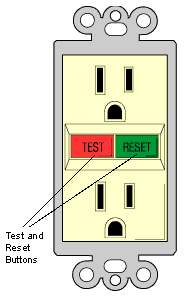
If the circuit that isn't working doesn't include a GFCI device, check the electric subpanel or main panel that serves the circuit. Await to see whether one of the circuit breakers has flipped off. This may non be every bit obvious as it sounds. A tripped circuit breaker won't necessarily be in the "Off" position—it may be halfway between "Off" and "On."
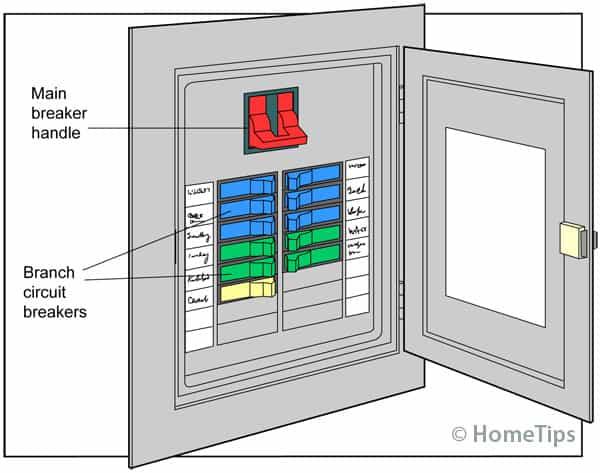
Turn off or unplug everything from the troubled circuit. Then reset the billow. Turn it all of the way to "Off" and then to "On."
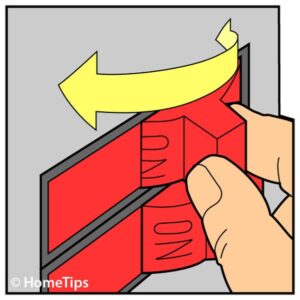
If your arrangement is protected by a fuse box instead of an electrical panel with circuit breakers, supersede the fuse that is "diddled." Look for aa cleaved element below the fuse's glass surface. It's best to utilize a tool called a fuse puller to remove and supplant the faulty fuse. Do not touch on the metal parts with your fingers!
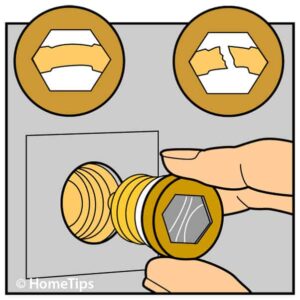

If the circuit blows immediately later on you reset the breaker or change the fuse, call an electrician. A charred wire or defective device in the circuit will probably need replacement.
If the circuit doesn't blow, plow the lights back on and plug in appliances 1 past 1 to bank check for the overload or short circuit.
Evaluating Electrical Loads
If one device that draws a lot of current seems to overload the circuit, you can plow off other devices when using it, simply information technology is probably a better thought to have your electrical service upgraded. If the lights or receptacles however don't piece of work, a loose wire is probably causing the trouble.
If lights dim with appliances kicking-on, the cause is too many electric devices drawing power from one circuit. If plugging some devices into receptacles on other circuits doesn't solve the trouble, you may have to upgrade your home's electric service panel.
For today'due south electrical needs, a main electrical panel should deliver 100 amps of power or more than; 150- or 200-amp services are fifty-fifty better for homes fitted with generous lighting and electrical amenities.
A master panel sized smaller than 100 amps may be overloaded, which tin can cause lights to dim when appliances kick on and may lead to frequent home power outages. If this is the case in your home, talk with an electric contractor nigh installing a new, larger electric service panel.
Do not do your own electrical repair unless you are accomplished at and knowledgeable about electric piece of work. If you are capable of doing this work, be sure to follow all safety precautions:
• Never piece of work on live electrical wires. Always close off the excursion get-go.
• Do not stand in h2o or on a damp floor, even when working on low-voltage wiring such every bit telephone wires.
How to Trace a Curt Excursion
Short circuits happen when a hot wire touches a neutral or ground wire; the extra current flowing through the excursion causes the billow to trip or a fuse to blow.
Although it'southward oftentimes easy to tell when you have a short or overloaded circuit—the lights go dead when you plug in the toaster oven—information technology isn't e'er every bit uncomplicated to tell where in the electrical system this has occurred.
Cheque for black smudge marks on the cover plates of non-working switches or receptacles. Then expect for frayed or damaged cords or damaged plugs on lamps and appliances.
Supersede a damaged string or plug, and so replace the fuse or reset the billow. If the circuit goes expressionless afterward an appliance has been in use for a short time, you probably accept an overloaded circuit. Move some of the lamps and appliances to another circuit, and replace the fuse or reset the circuit billow for the showtime circuit.
If you notice none of these signs of problem, you lot must trace your manner through the excursion following the steps beneath.
If these steps exercise not solve the problem, your wiring is faulty. In this example, information technology is best to call in an electrician to correct the problem.
Here is the sequence to follow for tracing a non-working circuit.
- Turn off all wall switches, and unplug every lamp and apparatus on the dead circuit. So reset the tripped breaker or install a new fuse as discussed above.
- If the circuit goes dead right away, the problem could be a brusk excursion in a receptacle or switch. With the power off to the excursion, remove the cover plates of doubtable switches and outlets. Inspect the wiring for bare wires that may be grounding confronting other wires or the metal box. Be sure to wait (and smell) for charred wire insulation. Replace or repair any problem wiring.
- Afterward resetting the excursion breaker or resetting the fuse, if the circuit billow does not trip or the new fuse does not blow right away, turn on each wall switch, one by one. If one of them trips the excursion breaker or blows the fuse, you've identified the source of the trouble. This means at that place is a brusque circuit in a light fixture or receptacle controlled by that switch, or there is a short circuit in the switch wiring. Supersede or repair a faulty switch, fixture, or wiring.
- If turning on a wall switch does non cause a problem, the problem is likely to exist in the lamps or appliances. Plug them in one at a fourth dimension to test each. If the circuit does non go expressionless, the circuit probably failed considering it was overloaded. Move some of the devices to another circuit. If the circuit does go dead merely later you plug in a device, you have plant the problem. Check the string first. So consider having an apparatus repair person check the apparatus's switch and other electric parts.
How to Test for Electricity at An Outlet or Switch
Checking to meet whether an electrical outlet or switch is connected to "live" electricity is like shooting fish in a barrel to do.
Using a Non-Contact Voltage Tester. The quickest, safest, and easiest tool to employ for checking to see whether an outlet or switch is receiving voltage is a non-contact electric tester. With this tool, you just press the not-conducting tip into a receptacle or agree it next to a switch to check for power. Also shown in the photograph below is a simple plug-in voltage checker for electrical outlets. Both of these are sold together on Amazon for under $20.

Using a Neon Tester. To see if a receptacle is expressionless, insert the probes of a circuit tester or a neon tester (shown) into the slots. Do not affect the metal ends of the probes with your fingers when the probes are plugged-in. The excursion is hot (charged) if the neon tester lights upward.
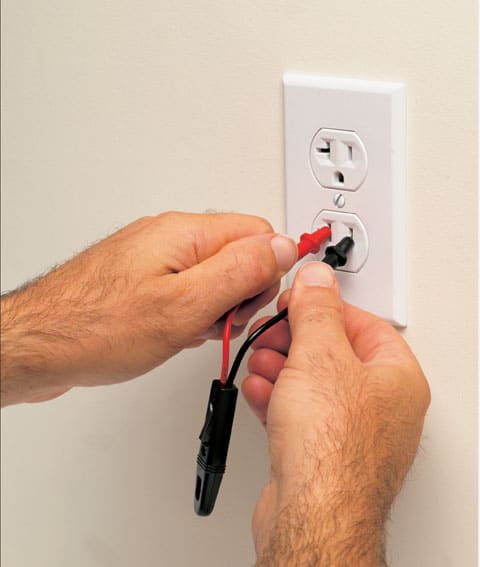

To see if a low-cal switch is receiving power, offset remove the switch'southward encompass plate. Impact a non-contact electrical connector against both screw terminals. If one of them causes the tester to point, the wire is charged. Do not touch the screw terminals or bare parts of the wires!
If you lot're using a neon tester, unscrew the switch from its box, beingness careful not to touch the bare wire ends or metal terminal screws. Belongings the insulated parts of the neon tester probes, touch one probe to a hot wire or the terminal it is connected to. And then impact the other probe to a bare neutral wire or concluding, to a grounding conductor, or to a grounded metal box. If the circuit is live, the tester will light upwards.
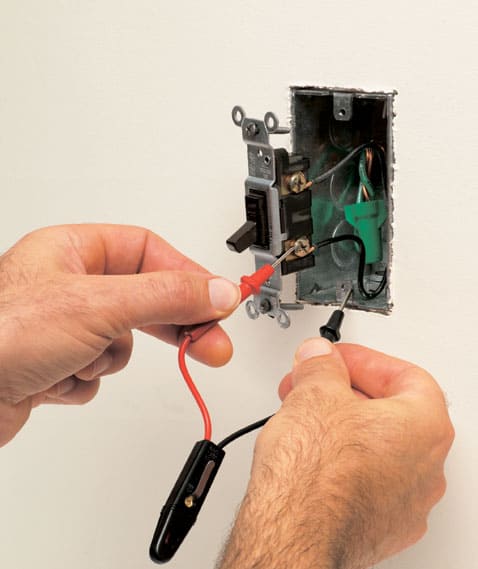

Featured Resources: Go a Pre-Screened Local Electrical Wiring Contractor
Source: https://www.hometips.com/repair-fix/electrical-circuit-overload-short.html
0 Response to "What Was the Cause of an Electric Circuit That Comes on and Then Off and Then on Again"
Postar um comentário